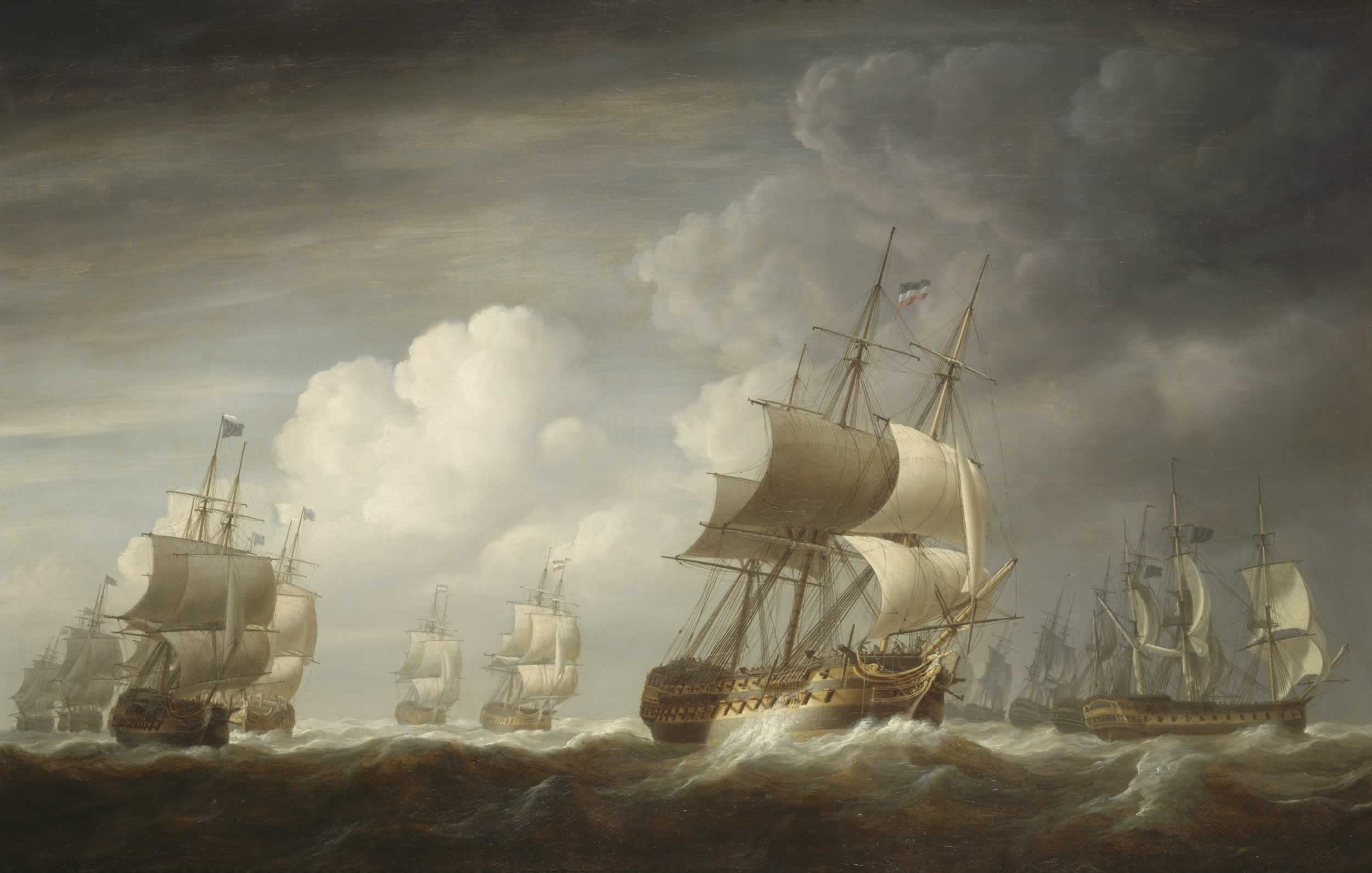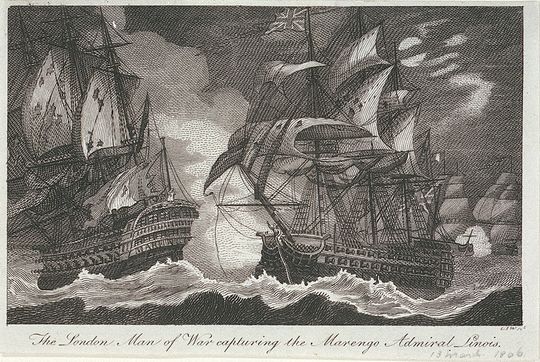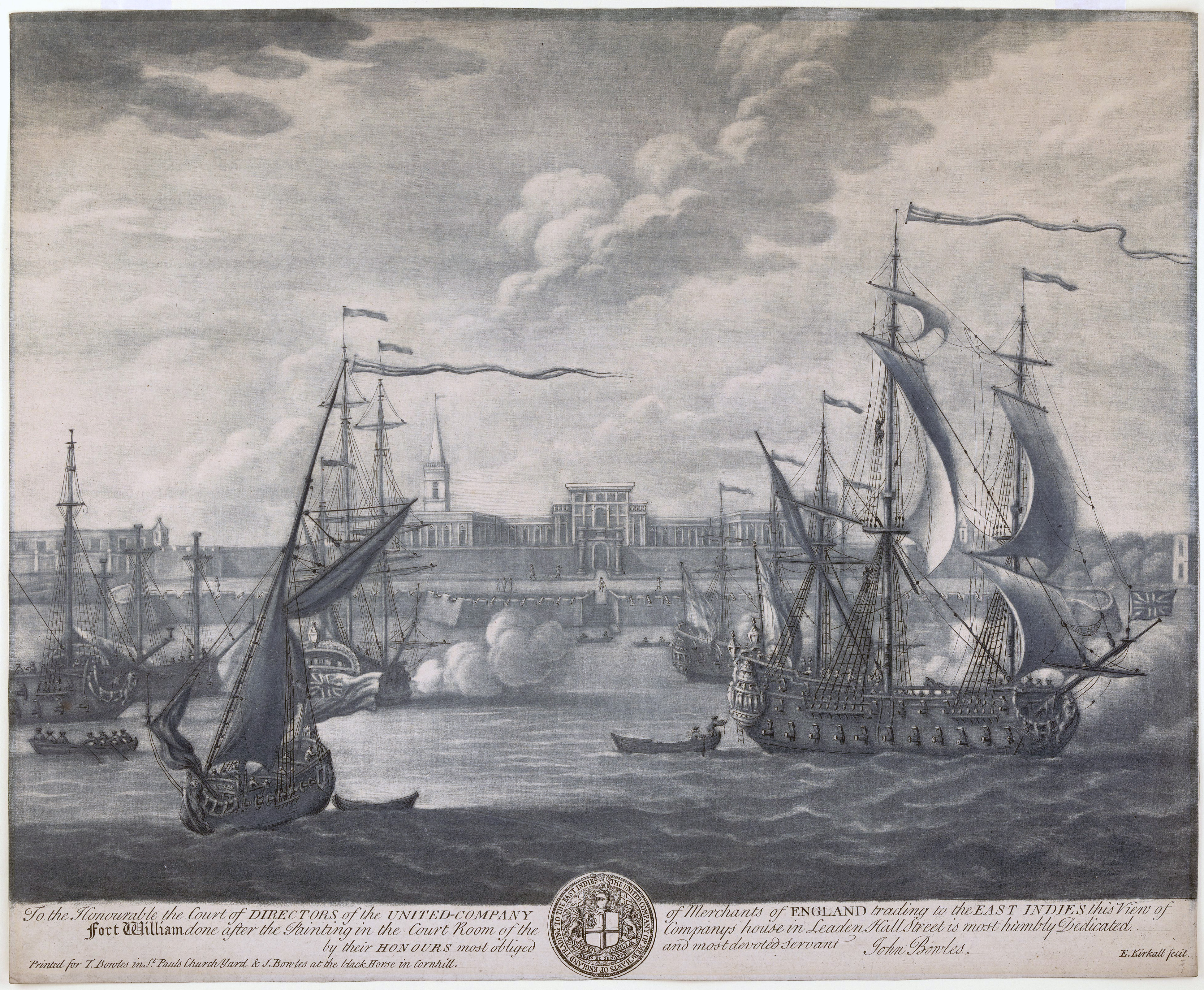|
Hope (1797 EIC Ship)
''Hope'' was launched in 1797 on the Thames River. She made seven voyages for the British East India Company (EIC) before she was sold for breaking up in 1816. She was one of the East Indiamen at the battle of Pulo Aura. Career EIC voyage #1 (1797–1798) Captain James Horncastle acquired a letter of marque on 11 April 1797. He sailed from Portsmouth on 3 June 1797, bound for China. ''Hope'' arrived at Whampoa Anchorage on 18 December. Homeward bound, she crossed the Second Bar on 15 February 1798, reached St Helena on 5 August, and arrived at the Downs on 18 October. Horncastle remained ''Hope''s master for two more voyages. EIC voyage #2 (1799–1800) ''Hope'' sailed from Portsmouth on 18 June 1799, bound for China. She reached Penang on 29 October and arrived at Whampoa on 14 January 1800. Homeward bound, she crossed the Second Bar on 10 March, reached St Helena on 15 July, and arrived at the Downs on 23 December. EIC voyage #3 (1801–1802) ''Hope'' sailed from Po ... [...More Info...] [...Related Items...] OR: [Wikipedia] [Google] [Baidu] |
Builder's Old Measurement
Builder's Old Measurement (BOM, bm, OM, and o.m.) is the method used in England from approximately 1650 to 1849 for calculating the cargo capacity of a ship. It is a volumetric measurement of cubic capacity. It estimated the tonnage of a ship based on length and maximum beam. It is expressed in "tons burden" ( en-em , burthen , enm , byrthen ), and abbreviated "tons bm". The formula is: : \text = \frac where: * ''Length'' is the length, in feet, from the stem to the sternpost; * '' Beam'' is the maximum beam, in feet. The Builder's Old Measurement formula remained in effect until the advent of steam propulsion. Steamships required a different method of estimating tonnage, because the ratio of length to beam was larger and a significant volume of internal space was used for boilers and machinery. In 1849, the Moorsom System was created in the United Kingdom. The Moorsom system calculates the cargo-carrying capacity in cubic feet, another method of volumetric measurem ... [...More Info...] [...Related Items...] OR: [Wikipedia] [Google] [Baidu] |
Charles-Alexandre Léon Durand Linois
Charles-Alexandre Léon Durand, Comte de Linois (27 January 1761 – 2 December 1848) was a French admiral who served in the French Navy during the reign of Napoleon Bonaparte. He commanded the combined Franco-Spanish fleet during the Algeciras Campaign in 1801, winning the First Battle of Algeciras before losing the Second Battle of Algeciras.Piat pp. 195–196 He then led an unsuccessful campaign against British trade in the Indian Ocean and South China Sea in 1803, being defeated by a harmless fleet of the East India Company during the Battle of Pulo Aura and ending his cruise and sea-going career being bested in battle by John Warren in the action of 13 March 1806. Following the Bourbon restoration, Linois was appointed Governor of Guadeloupe. He supported Napoleon during the Hundred Days and so, on his return to France, he was forced to resign and was court martialled. Although acquitted, he was placed in retirement and never served again. Biography Born in Brest, Lin ... [...More Info...] [...Related Items...] OR: [Wikipedia] [Google] [Baidu] |
1797 Ships
Events January–March * January 3 – The Treaty of Tripoli, a peace treaty between the United States and Ottoman Tripolitania, is signed at Algiers (''see also'' 1796). * January 7 – The parliament of the Cisalpine Republic adopts the Italian green-white-red tricolour as the official flag (this is considered the birth of the flag of Italy). * January 13 – Action of 13 January 1797, part of the War of the First Coalition: Two British Royal Navy frigates, HMS ''Indefatigable'' and HMS ''Amazon'', drive the French 74-gun ship of the line '' Droits de l'Homme'' aground on the coast of Brittany, with over 900 deaths. * January 14 – War of the First Coalition – Battle of Rivoli: French forces under General Napoleon Bonaparte defeat an Austrian army of 28,000 men, under ''Feldzeugmeister'' József Alvinczi, near Rivoli (modern-day Italy), ending Austria's fourth and final attempt to relieve the fortress city of Mantua. * January 26 &ndas ... [...More Info...] [...Related Items...] OR: [Wikipedia] [Google] [Baidu] |
HMS Belle Poule (1806)
HMS ''Belle Poule'' was a Royal Navy fifth-rate frigate, formerly ''Belle Poule'', a of the French Navy that had been built by the Crucy family's shipyard at Basse-Indre to a design by Jacques-Noël Sané. She was launched on 17 April 1802, and saw active service in the East. In 1806 a British squadron under Sir John Borlase Warren captured her off La Palma in the Canary Islands. The Admiralty commissioned her into the Royal Navy as HMS ''Belle Poule''. She was sold in 1816. French Navy service In March 1803, she joined the fleet of Rear-Admiral Charles-Alexandre Léon Durand Linois, whose mission was to re-take the colonies of the Indian Ocean, given to English at the peace of Amiens. The fleet included the 74-gun ship of the line ''Marengo'', the frigates , ''Belle Poule'' and , troop ships, and transports with food and ammunition. On 15 June 1803 ''Belle Poule'' landed troops at Pondichéry in India. However, the French fleet left the next day and the troops surrende ... [...More Info...] [...Related Items...] OR: [Wikipedia] [Google] [Baidu] |
French Ship Jean-Jacques Rousseau (1795)
''Jean-Jacques Rousseau'' was a 74-gun ship of the line of the French Navy, active during the French Directory, French Consulate and First French Empire. Renamed ''Marengo'' in 1802, she took part in Linois' operations in the Indian Ocean before her capture by the Royal Navy. Career Construction of ''Jean-Jacques Rousseau'' began in September 1794 at Toulon, and she was launched on 21 July 1795. In October 1796, under Captain Racord, she was part of the Villeneuve's squadron that sailed from Toulon to Brest. On 2 December 1802, she was renamed to ''Marengo'', reflecting the political change away from the Revolutionary Republic inspired by Jean-Jacques Rousseau towards the advent of General Bonaparte. On 6 March 1803, she departed Brest as the flagship of a squadron under Admiral Linois, set to take possession of Pondicherry, which the Treaty of Amiens had attributed to France. The squadron also comprised the frigates ''Belle Poule'', ''Atalante'' and ''Sémillante'', ... [...More Info...] [...Related Items...] OR: [Wikipedia] [Google] [Baidu] |
Sir Thomas Troubridge, 1st Baronet
Rear Admiral Sir Thomas Troubridge, 1st Baronet (22 June 17571 February 1807) was a Royal Navy officer. As a junior officer he saw action at the Battle of Sadras in February 1782 during the American Revolutionary War and the Battle of Trincomalee in September 1782 during the Anglo-French War. He commanded the third-rate '' Culloden'' at the Battle of Cape St Vincent in February 1797 during the French Revolutionary Wars. He went on to be First Naval Lord and then served as Commander-in-Chief, East Indies, during the Napoleonic Wars. Naval career Born the son of Richard Troubridge, a baker, Troubridge was educated at St Paul's School, London. He entered the Royal Navy on 8 October 1773 and, together with Horatio Nelson, served in the East Indies in the frigate . He was promoted to lieutenant on 1 January 1781 on the newly-purchased sloop ''Chaser''. On 3 March he returned to ''Seahorse''. In her he took part in the Battle of Sadras in February 1782 during the American R ... [...More Info...] [...Related Items...] OR: [Wikipedia] [Google] [Baidu] |
Austin Bissell
Austin Bissell (died 1807) was an officer of the Royal Navy. He was captain of the captured French frigate ''Créole'' when she sank on a journey from Jamaica to England.Clowes, p. 318 Naval career HMS ''Racoon'' On 18 October 1802, Commander Bissell was given command of the 16-gun brig-sloop .Winfield While under his command, ''Racoon'' took part in several notable actions. HMS ''Creole'' On Tuesday 3 January 1804, Bissell took command of the captured French frigate ''Créole'' in Port Royal, Jamaica. However, the ship foundered en route to Britain; nearby British vessels saved Bissell and his crew. Death Bissell died in 1807 when the 74-gun , of which he was then captain, foundered in the Indian Ocean. Bissell as an author Bissell wrote a biography of Commodore John Blankett's voyages in the Middle East and India.Bissell The book was published in 1806 at the expense of the East India Company The East India Company (EIC) was an English, and later British, joint-st ... [...More Info...] [...Related Items...] OR: [Wikipedia] [Google] [Baidu] |
Lloyd's Patriotic Fund
Lloyd's Patriotic Fund was founded on 28 July 1803 at Lloyd's Coffee House, and continues to the present day. Lloyd’s Patriotic Fund now works closely with armed forces charities to identify the individuals and their families who are in urgent need of support. The contributors created the fund to give grants to those wounded in service to the Crown and to set up annuities to the dependents of those killed in action. The Fund also awarded prizes to those British combatants who went beyond the call of duty. The rewards could be a sum of money, a sword or a piece of plate.Low p165 The awards were highly publicized to help raise morale during wartime.Lincoln p95 In 1807 the fund also donated £61,000 to the Royal Naval Asylum, giving Lloyd's Patriotic Fund the enduring right to nominate children to the school.Gawler p55 On 24 August 1809 the Fund held a general meeting of its subscribers. The subscribers decided at that time to discontinue awards for merit. The Peninsular War was ... [...More Info...] [...Related Items...] OR: [Wikipedia] [Google] [Baidu] |
Lloyd's Of London
Lloyd's of London, generally known simply as Lloyd's, is an insurance and reinsurance market located in London, England. Unlike most of its competitors in the industry, it is not an insurance company; rather, Lloyd's is a corporate body governed by the Lloyd's Act 1871 and subsequent Acts of Parliament. It operates as a partially-mutualised marketplace within which multiple financial backers, grouped in syndicates, come together to pool and spread risk. These underwriters, or "members", are a collection of both corporations and private individuals, the latter being traditionally known as "Names". The business underwritten at Lloyd's is predominantly general insurance and reinsurance, although a small number of syndicates write term life insurance. The market has its roots in marine insurance and was founded by Edward Lloyd at his coffee house on Tower Street in 1688. Today, it has a dedicated building on Lime Street which is Grade I listed. Traditionally business is ... [...More Info...] [...Related Items...] OR: [Wikipedia] [Google] [Baidu] |
Lloyd's List
''Lloyd's List'' is one of the world's oldest continuously running journals, having provided weekly shipping news in London as early as 1734. It was published daily until 2013 (when the final print issue, number 60,850, was published), and is in constantly updated digital format only since then. Also known simply as ''The List'', it was begun by Edward Lloyd, the proprietor of Lloyd's Coffee House, as a reliable and concise source of information for the merchants' agents and insurance underwriters who met regularly in his establishment in Lombard Street to negotiate insurance coverage for trading vessels. The digital version, updated hour-to-hour and used internationally, continues to fulfil a similar purpose. Today it covers information, analysis and knowledge relevant to the shipping industry, including marine insurance, offshore energy, logistics, market data, research, global trade and law, in addition to shipping news. History Predecessor publications are known. One hist ... [...More Info...] [...Related Items...] OR: [Wikipedia] [Google] [Baidu] |
British India
The provinces of India, earlier presidencies of British India and still earlier, presidency towns, were the administrative divisions of British governance on the Indian subcontinent. Collectively, they have been called British India. In one form or another, they existed between 1612 and 1947, conventionally divided into three historical periods: *Between 1612 and 1757 the East India Company set up factories (trading posts) in several locations, mostly in coastal India, with the consent of the Mughal emperors, Maratha Empire or local rulers. Its rivals were the merchant trading companies of Portugal, Denmark, the Netherlands, and France. By the mid-18th century, three ''presidency towns'': Madras, Bombay and Calcutta, had grown in size. *During the period of Company rule in India (1757–1858), the company gradually acquired sovereignty over large parts of India, now called "presidencies". However, it also increasingly came under British government oversight, in effect shar ... [...More Info...] [...Related Items...] OR: [Wikipedia] [Google] [Baidu] |
Nathaniel Dance
Sir Nathaniel Dance (20 June 1748 – 25 March 1827) was an officer of the East India Company who had a long and varied career on merchant vessels, making numerous voyages to India and back with the fleets of East Indiamen. He was already aware of the risks of the valuable ships he sailed on being preyed on by foreign navies, having been captured by a Franco-Spanish fleet in 1780 during the East Indies campaign of the American War of Independence. His greatest achievement came during the Napoleonic Wars, when having been appointed commodore of one of the company's fleets, he came across a French squadron under Rear-Admiral Comte de Linois, which was raiding British shipping in the area. Through skillful seamanship and aggressive tactics he fooled the French commander into thinking that the British convoy was escorted by powerful naval forces, and the French decided not to risk attacking the convoy. Dance compounded the deception by taking his lightly armed merchants and ch ... [...More Info...] [...Related Items...] OR: [Wikipedia] [Google] [Baidu] |



_pursuing_possible_Belle_Poule.jpg)





